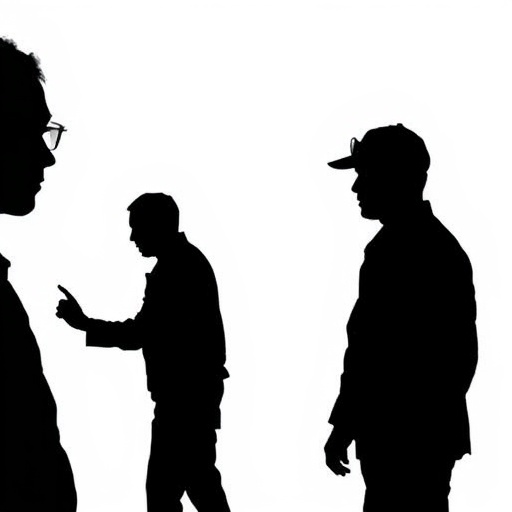In the realm of emergency response, the manner in which a 911 caller expresses themselves can unwittingly influence suspicions about their involvement in reported crimes, according to pioneering research conducted by Cornell University. This novel study sheds light on the nuanced behavioral cues that may inadvertently cast innocent callers as suspects, revealing a critical blind spot in emergency and investigative practices.
The research, encompassing four comprehensive studies and involving approximately 1,800 civilian participants alongside 300 law enforcement officers, scrutinized real and simulated 911 calls reporting violent incidents such as shootings. Through rigorous analysis, the team identified five key behavioral dimensions that significantly alter the perception of a caller’s credibility. Among these, the demonstration of emotion and urgency stood out as mitigating factors against suspicion, whereas behaviors indicating communication difficulties, guardedness, and impression management heightened doubt.
Crucially, these first impressions are not mere academic concerns but have profound real-world consequences. Once a caller is labeled a suspect based on their demeanor rather than evidence, confirmation bias can pervade investigative processes. This bias skews attention towards evidence affirming guilt while disregarding contradictory facts, increasing the risk of wrongful convictions—a phenomenon extensively documented in criminal justice research.
Jessica Salerno, an associate professor of psychology and co-author of the study, emphasized the risks posed by rigid expectations regarding caller behavior. She pointed out that cultural backgrounds, personality traits, neurological differences, physical disabilities, and acute stress reactions profoundly influence communication styles in traumatic situations. This variance means that expecting a standardized emotional response during emergency calls is not only unrealistic but also potentially harmful.
The experimental design of the study leveraged both authentic 911 call recordings and actor-performed scripts that faithfully reproduced actual violent events. Participants evaluated these calls on multiple behavioral axes, including emotional expression, the level of urgency conveyed, the caller’s cognitive load or difficulty articulating information, their management of information by either withholding or sharing details selectively, and their attempts to shape the impression they made.
Among analyzed factors, emotional display was the most influential in shaping suspicion. Notably, calls reporting the same violent event but delivered with diminished emotional intensity elicited significantly higher suspicion ratings. This effect was observed across lay and professional listener groups, although an interesting divergence emerged: law enforcement officers exhibited a greater predisposition to suspect male callers compared to female ones, a bias not mirrored among civilian participants.
This research challenges prevailing investigative training paradigms wherein law enforcement personnel are sometimes encouraged to infer culpability based on vocal demeanor and emotional expressiveness during 911 calls. The study authors contend that while factual scrutiny of emergency calls is indispensable, judging guilt based on how a caller “sounds” constitutes a flawed and dangerous methodology.
By dissecting the microdynamics of caller suspicion, this research paves the way for systemic reforms aimed at minimizing wrongful convictions. Preventative strategies, grounded in improved understanding of caller behavior variations, promise the most effective route to ensure that innocent individuals do not become ensnared in the investigatory machinery due to misinterpretation of their distress signals.
Furthermore, the findings underscore the necessity of training programs that sensitize emergency responders and investigators to the diversity of communicative responses elicited by trauma and stress rather than enforcing narrow behavioral expectations. Adjusting law enforcement protocols in this manner could dramatically reduce the incidence of confirmation bias triggered at the earliest stages of investigation.
In addition to its implications for criminal justice procedures, the study contributes to broader psychological science, highlighting how cognitive and social factors intersect within high-stakes communication. It also invites further interdisciplinary exploration into how systemic biases propagate within institutional frameworks under conditions of urgency and uncertainty.
This research not only exposes the precarious position of 911 callers but also spotlights a critical juncture at which institutional practices can either reinforce injustice or foster fairness. As calls for judicial reform grow louder nationwide, the insights derived from this work provide a crucial empirical foundation for policy makers and practitioners urging evidence-based change.
Ultimately, the work of Salerno and colleagues stresses the humanity behind the statistics—reminding us that in crises, how a person communicates is shaped by myriad invisible forces beyond their control, and should never be misconstrued as a proxy for guilt.
Subject of Research: Behaviors in 911 emergency calls that trigger suspicion and contribute to wrongful suspect identification.
Article Title: From Caller to Suspect: Identifying Behaviors That Trigger Suspicion in 911 Calls
News Publication Date: Not explicitly provided; research is accepted for publication in Law and Human Behavior.
Web References: https://news.cornell.edu/stories/2025/09/how-some-911-callers-become-criminal-suspects; http://dx.doi.org/10.31234/osf.io/9kts5_v1
References: Salerno, J.M., et al. “From Caller to Suspect: Identifying Behaviors That Trigger Suspicion in 911 Calls.” Law and Human Behavior, accepted for publication.
Keywords: Psychological science, Law enforcement, Confirmation bias, Emergency communication, Wrongful conviction, Cognitive load, Impression management




